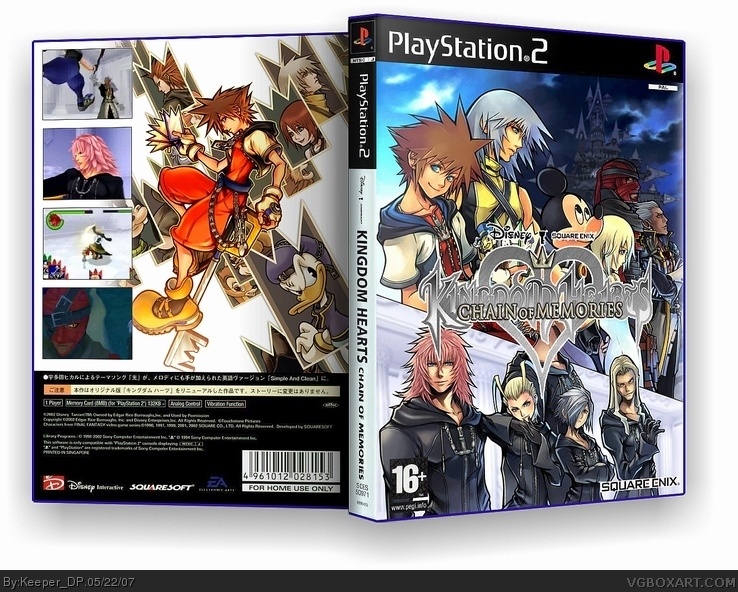
-7.jpg)

Item cards themselves can be used to instantly reload the specified card type, with higher quality item cards being able to also reload even unreloadable cards, as well as reset the reload counter entirely. Reloading will not bring back item cards and Premium Cards, nor those lost by stocking.

Said number starts at 1, and increases by 1, up to 3, with each reload, thus making combat consecutively more difficult as the fight goes on (as you have to stand still when charging it). Played cards become temporarily unavailable, up until the Reload Card is fully charged, which does not have to be done all at once. The deck can also be cycled, going back and forth, allowing you to select a specific card to play, or skip one to save for later, which is crucial as you can do this when otherwise unable to act. Attack cards can thus be played in quick succession to create three-hit combos. In a fight both Sora and Riku can play the selected card for an immediate effect, only limited by the card's own animation. The final option is by purchasing card packs from a Moogle Shop, which in itself is found within a Moogle Room map card. Several bounty map cards, as well as the Key to Rewards room, also often contain guaranteed cards. Cards are also frequently found by destroying breakable objects inside rooms, provided they are picked up before a fight commences. The primary way is through story progression, as defeated bosses and some events grant specific rewards. A deck must at minimum contain a single attack card.Įditing a deck for the first time, and editing decks for 500 times total, grants you the bronze trophies and achievements Novice Deck Builder and Expert Deck Builder in the 1.5 ReMIX version.Ĭards can be acquired through several methods. Although Riku makes use of a mostly-fixed deck per world, Sora can freely outfit a deck to his choosing, and can design up to three decks and switch between them outside of combat. A deck has a limit of 99 cards, although you are more likely to hit the limit on Card Points (CP) prior to that, with higher value and stronger cards taking up more CP.īoth versions of the game start with a CP limit of 275 at level 1, which can be increased by 25 per level, with a maximum of 1,900 in the GBA version, and 1,625 in the remake. Leaving a floor will reset that entire floor's collection of rooms.īoth Sora and Riku make use of card decks, as do all Organization members, and a few other people such as Riku Replica, Cloud, Hades, and Captain Hook, granting them the exact same advantages and disadvantages in combat. All map cards have varying effects, both positive and negative. Room contents almost always contain Heartless to be fought, with the size of the room and the number of enemies being dependent on the exact map card that was used to synthesize the room. Some rooms also require a Keycard, which is a one-of-a-kind type card used only for that exact room. Map cards serve a similar purpose, allowing you to progress through a world's rooms, with each room (except the first and last) requiring a map card of a specific value (from 0 through 9). Once chosen a world card becomes impossible to remove or change. You can visit the available worlds in any order, as enemy health and strength scales with each floor, leaving you to choose which you want to visit first, or last. They are always gained by progressing through the story, often after defeating a boss. World cards are used to select the card-world you visit on each floor. Riku underwent a similar trial, learning about the cards and several mechanics unique to him through DiZ pretending to be Ansem. In the Room of Beginnings Sora and his friends met with Leon, who gave him further instructions on various card mechanics. In Traverse Town Sora found that both his friends had also turned into cards, as Marluxia explained the basics to him. This was after Donald attempted to hit him using spells, showing that the castle had already made them forget all they knew on entry. The first card introduced in Chain of Memories was the Traverse Town world card, produced by a hooded Marluxia who sampled Sora's memories to make it.


 0 kommentar(er)
0 kommentar(er)
